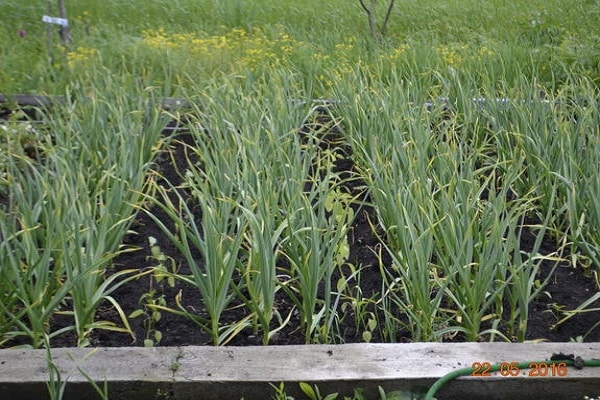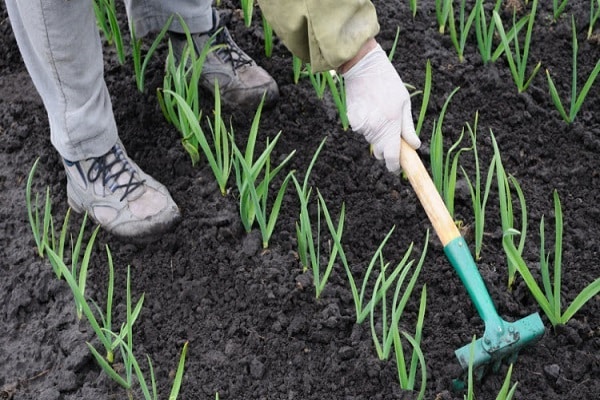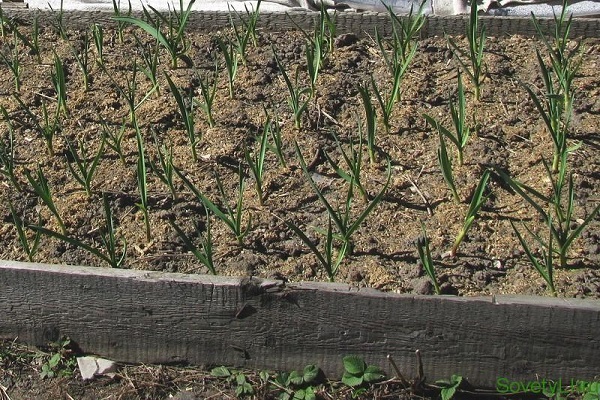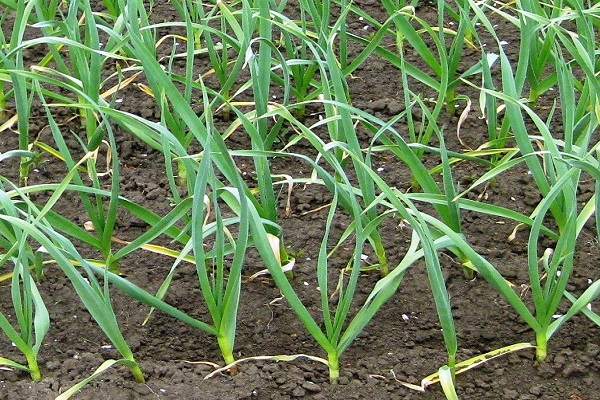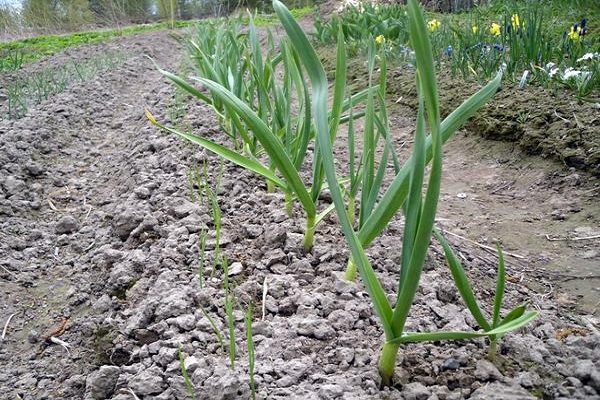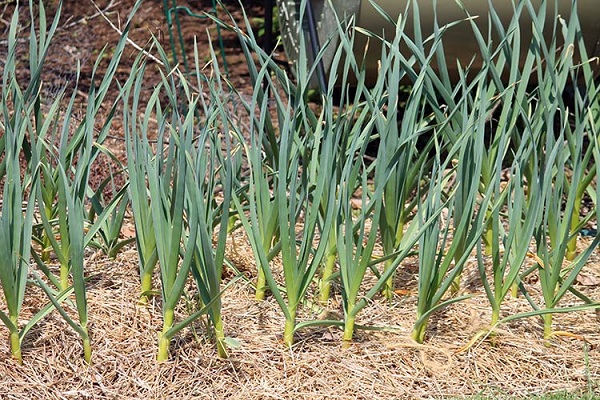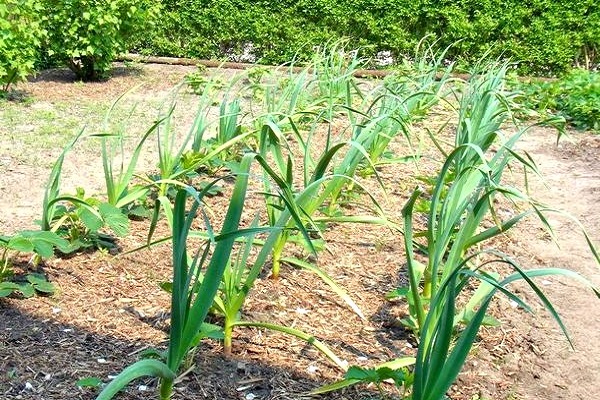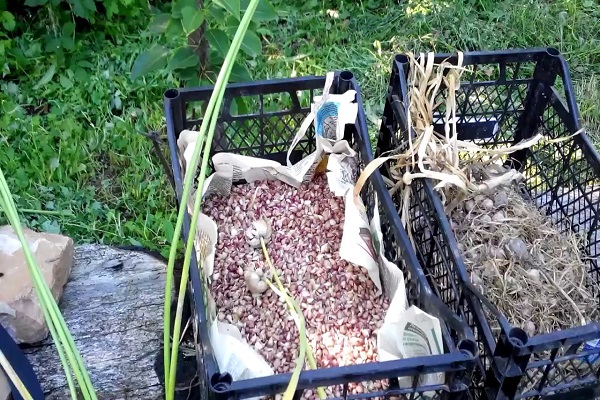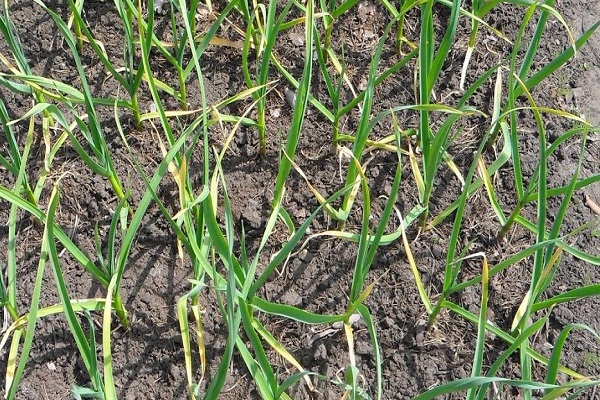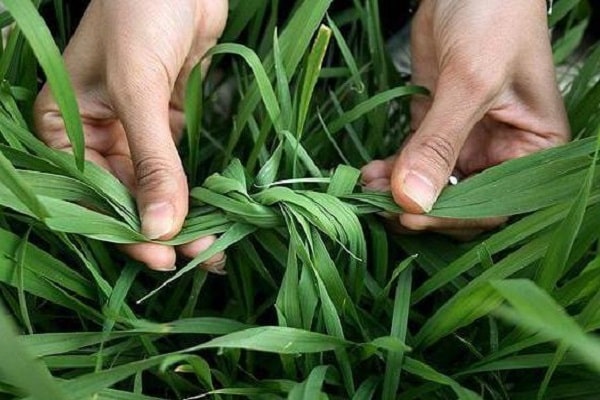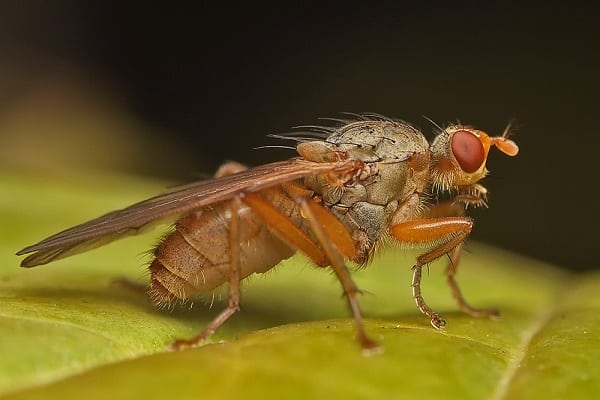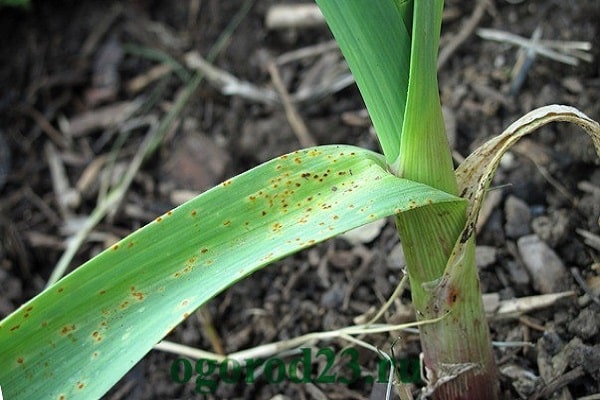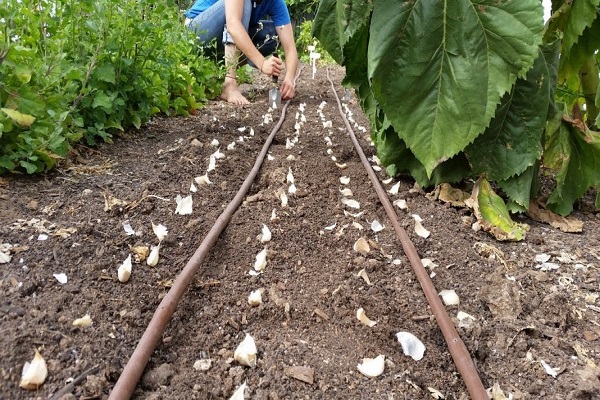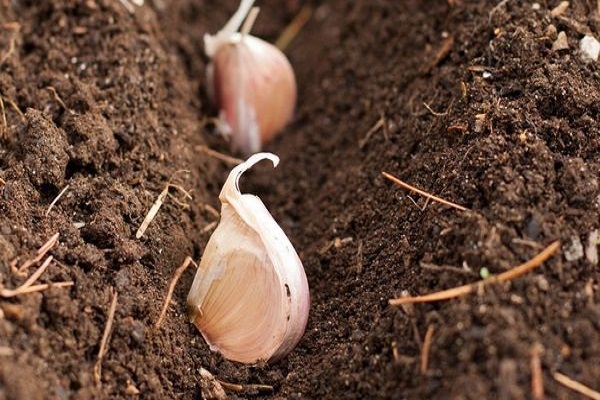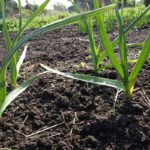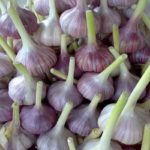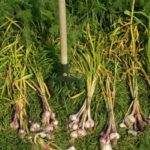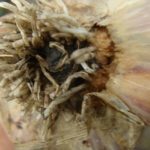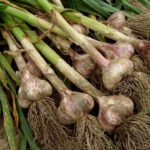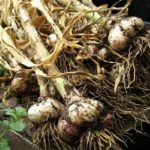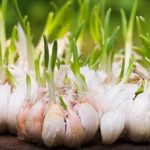Vegetable growers often face the question of whether it is necessary and possible to rake the soil away from the heads of garlic? Judging by the reviews, this agricultural technique gives good results. You just need to do this correctly and in a timely manner.
- Is it necessary to rake away the soil from the heads of garlic and why is this done?
- The benefits and harms of exposing garlic in the garden
- When should you dig?
- If the garlic heads go deep into the ground
- Techniques for properly growing garlic
- Why do they tie the tops?
- Diseases and pests
- Advice from an experienced summer resident
Is it necessary to rake away the soil from the heads of garlic and why is this done?
It is believed that unhilling has a beneficial effect on the ripening of a good harvest. Use special garden tools to rake the soil down to half the bulb.There are several reasons why the earth is raked away from the heads of the spicy vegetable:
- The size of the bulb increases. The root system, especially of winter crops, is powerful and goes deep into the ground. As the roots go deeper, they pull the head inward. As a result, it does not receive enough air, nutrients and light.
- By looking at the exposed bulb, you can easily track the condition of the crop. This is important when the weather is bad, hot or rainy.
- The plant does not need to expend energy pushing apart the top layer of soil, and the bulbs receive enough sunlight and heat.
- The scales will be stronger, and the vegetable will be stored much longer.
The ripening of the crop is indicated by yellowing, drying and lodging of the leaves of the plant. The scales on the bulb become dry and easy to clean. The arrows straighten, and the boxes begin to crack.
The benefits and harms of exposing garlic in the garden
The benefit of exposing garlic, according to experienced gardeners, is that the bulb receives more sunlight, dries out faster, ripens and receives enough nutritional components. In addition, the head acquires the color characteristic of the variety.
Next time, everyone decides for themselves whether it is necessary to rake the soil around the head of garlic based on their own observations. In addition to the positive qualities, this procedure also has disadvantages:
- Since the bulb sits deep in the ground, you will have to rake away a lot of earth, and a hole will form. Moisture will begin to accumulate in it after watering or rain. As a result, head rot may develop and the harvest may be lost.
- If the soil is loosened in a timely manner, the bulb will not go too deep. As a result, you can do without the unnecessary procedure of exposing the head.
Garlic is a light-loving vegetable crop that does not tolerate wetlands. To achieve a good harvest, you need to choose the right place for planting, prepare planting material, and leave a large distance between the bushes during planting. Care consists of regular watering, applying complex fertilizers, loosening the soil, and weeding the beds to remove weeds.
All these features of cultivation will help to avoid mistakes and resolve the issue of the need for certain procedures.
When should you dig?
When you can rake garlic in the garden depends on the variety and weather conditions. Most often, the procedure begins in early July. The procedure is carried out a couple of weeks before the full harvest. The suitable time for winter crops is the end of June, for spring varieties of garlic The best period is considered to be the last days of July.
Bare garlic heads in the garden receive more sunlight. But the procedure must be carried out correctly and carefully, while simultaneously loosening the soil between the rows. If the integrity of the bulb is damaged during the procedure, the risk of rotting and fungal infection increases.
If the garlic heads go deep into the ground
Winter garlic is planted deep (depth equal to the height of three bulbs). Such garlic will definitely not sprout in the fall; it will survive the winter well and begin to grow only in the spring. A strong root system pulls planting material into the ground in the fall. If the winter is very cold, the garlic will go deep.
For garlic to sprout, there must be loose soil. To do this, in the fall after harvest and in the spring, you need to apply organic and mineral fertilizers. In this case, it will not be scary when the garlic gets too deep in the soil.
At the beginning of June, this is approximately 21 days before digging up the ripened heads, the garlic heads are freed from the ground. Whether this needs to be done depends on the quality of the heads, the weather, and the composition of the soil. For example, if the weather is rainy, then such a technique will help reduce the risk of rotting.
Around this time, the arrows are cut off and they stop watering, loosening the soil and applying fertilizers. Don't worry if the tops are juicy and thick, as they accumulate many nutritional components. The leaves are simply tied to direct microelements to the bulbs.
Tearing off the shoots and raking away the soil promotes the growth of the heads, the accumulation of nutritional components in them and the rapid ripening of the vegetable crop.
Techniques for properly growing garlic
It is best to grow winter garlic at your summer cottage. It differs from spring varieties in its large head and fewer cloves, as well as in its early ripening period. The main advantage of the spring crop is long-term storage. The heads remain dense and juicy until the summer. Growing garlic involves not only timely watering, weeding, loosening the soil and applying fertilizers.
For getting large garlic break off the resulting arrows. During the formation of shoots, the plant slows down its growth, and all forces are directed to the growth of seed material. Just don’t remove all the arrows at once; it is recommended to leave a few. It is from them that the degree of maturity of the heads can be determined. As soon as the arrow straightens and the seed box begins to crack, you can begin harvesting.
Sometimes vegetable growers wonder why garlic goes deep into the ground.This may be due to loose soil, a strong root system of the vegetable and initially deep planting of the cloves. It is recommended to plant garlic cloves in already prepared furrows, 5–6 cm deep. During heavy rains, the soil will become compacted, and the garlic heads will settle even deeper in the ground.
Why do they tie the tops?
Another technique that allows you to reap a good harvest of garlic is tying the tops in a knot. In garlic, unlike onions, nutrients move more slowly from the leaves to the roots, and feathers die off less quickly.
After tying the leaves into knots, changes are made to photosynthesis, and an increased outflow of micronutrients occurs to the underground part of the plant. The leaves begin to dry out, the bulb stops sprouting and accumulates all the useful components.
They begin to tie the tops 5 days before the expected digging of the crop. For bolting varieties, you need to remove the arrow. Ideally, this procedure is carried out a week earlier. But this only applies to winter crops, since spring garlic does not produce shoots. The leaves are slightly twisted into a rope and tied in the form of a regular knot. If the tops are short, you can braid them.
Diseases and pests
Diseases and pests can cause great damage to the crop. Frequent pests that attack garlic beds are root mites, stem nematodes, mole crickets, centipedes, onion moth. Larvae and adults, making tunnels in the upper layers of the soil, contribute to the fact that the garlic goes deep into the ground. This can negatively affect the development of the head.
You can save the harvest by spraying the leaves with an infusion of tobacco, pepper and wood ash. Sometimes you can’t do without the help of insecticides: Actellik, Clofentezine.
Diseases such as rot, green mold, and mosaic cause the leaves to dry out, turn yellow, spots of different colors appear on them, plant growth stops, the bulbs stop ripening and begin to rot. For example, fungicides such as Quadris, Alirin, Gamair, Fitosporin will help cope with diseases.
To reduce the risk of disease, you need to carefully select planting material. Only large, dense, defect-free cloves are suitable for planting. They are placed in a disinfectant solution of copper sulfate, potassium permanganate or wood ash.
Advice from an experienced summer resident
The time for planting garlic depends on the selected type and variety. Winter crops begin to be planted from mid-September until the first days of October. Spring garlic is planted in the spring, when the threat of severe frost is over (around mid-April).
In the reviews of many vegetable growers you can find the following advice: “I first dig up the area for the beds and apply fertilizers. Can be treated with peat, sand, wood ash. A week before planting, it is useful to disinfect the soil by spilling it with a solution of Fitosporin.
I deepen the garlic cloves by 6–7 cm and sprinkle them with humus. In summer, arrows sprout, which are better to break off; they only interfere with getting a good harvest.”
“Every year we open the garlic by scraping away the soil from the bulbs. Thanks to this, they grow larger in size and taste juicier and more aromatic.”

